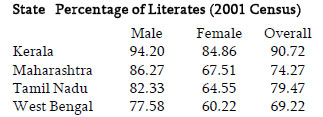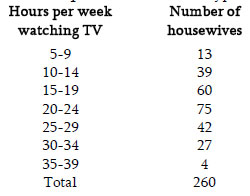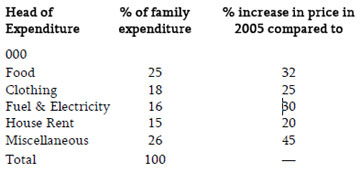(HOT) UPSC Current Affairs 2025 PDF
NEW! The Gist (NOV-2025) | E-BOOKS
(Exam Paper) UPSC IAS Mains 2006: General Studies
(Exam Paper) UPSC IAS Mains 2006: General Studies
Paper - I
1. Answer any one of the following (in about 250 words): 30
(a) Regardless of distance in time, there were lots of similarities between
Lord Curzon and Jawahar Lal Nehru. Discuss.
(b) How did the Government of India Act, 1935 mark a point of no return in the
history of constitutional development in India ?
2. Answer any two of the following (in about 150 words): 2 × 15 = 30
(a) What was the attitude of Indian Industrialists towards the Indian
National Congress in the preindependent era ?
(b) Critically assess Sir Tej Bahadur Sapru’s views on Indian Nationalism.
(c) Characterise the main features of Indian Renaissance.
3. Write about the following (not exceeding 20 words each): 15 × 2 = 30
(a) Kalhana
(b) Panini
(c) Yakshagana
(d) Natyasastra
(e) Tabaqat-i-Nasiri
(f) MadhuraVijayam
(g) Pandurang Mahatmya
(h) Prithviraj Raso
(i) “The Insider”
(j) Ali SardarJafri
(k) Aruna Roy
(l) Dr. J.C. Daniel
(m) Balwant Gargi
(n) Dr. Jayant Narlikar
(o) Shashi Tharoor
4. Answer any twoof the following (in about 125 words): 2 × 10 = 20
(a) Bring out the prospects of development of alternative energy sources of
India.
(b) Blue Revolution has definite advantages in India but it is not free from
environmental impacts. Discuss.
(c) Why do the rivers of west coast not form a delta ?
5. Write notes on the following (in about 20 words each): 5 × 2 = 10
(a) Mixed economy
(b) Winter rains in India
(c) New Moore Island
(d) National Water Grid
(e) Hussain Sagar
6. Answer anyone of the following (in about 250 words): 30
(a) What is right to life and personal liberty? How have the courts expanded
its meaning in recent years ?
(b) On what grounds can a member be disqualified from either House of
Parliament?\
7. Answer any one of the following questions (in about 250 words) :
(a) What is the ‘strategic partnership’ between India and United States of
America ? What are its implications for both the partners ?
(b) Discuss economic backwardness as a major challenge of Indian democracy. Can
democracy and development go together smoothly ?
8. Answer any two of the following questions (in about 150 words): 2 × 15 = 30
(a) How would you differentiate between the passage of a Constitution
Amendment Bill and of an Ordinary Legislative Bill ?
(b) How does the Inter-State Council establish co-ordination between States?
(c) Is the High Courts’ power to issue ‘writs’ wider than that of the Supreme
Court of India ?
9. Answer the following questions (in about 20 words each): 5 × 2 = 10
(a) Explain the following terms :
(i) Dissolution of the House
(ii) Prorogation of the House
(iii) Adjournment of the business of the House
(b) What is Consolidated Fund of India ?
(c) To what extent can the President withhold his assent to a Bill already
passed by the Parliament ?
(d) What is India’s ‘Look East’ Policy?
(e) What is meant by empowerment of women’ in India ?\
10. Answer any one of the following questions (in about 250 words) : 30
(a) What are the social and economic consequences of abolishing child labour
in India ?
(b) Explain the implications of the implementation of Intellectual Property
Clauses in our patent law regime after joining the WTO.
11. Answer any two of the following questions (in about 125 words each) : 2 × 10 = 20
(a) Explain full convertibility of Indian Rupee.
(b) What are the linkages to be developed under the Knowledge Revolution for
Rural India Plan ?
(c) What do we understand by ‘Doha Round’ of talks?
12. Answer any two of the following questions (in about 125 words each) : 2 × 10 = 20
(a) Explain the social constraints in bringing about gender equality in
Indian society.
(b) What are the problems related to the rehabilitation of the mentally
challenged persons in India ?
(c) Bring out the issues involved in implementing compulsory primary education
in India.
13. Write about the following (in about 20 words each) :
(a) Business Process Outsourcing
(b) Female foeticide
(c) RCI
(d) UNIDO
(e) S. Chandrashekhar
Paper – II
1. Write about any two of the following (in about 150 words each) : 15 × 2 = 30
(a) US policy on Iran’s nuclear programme
(b) Terrorism : Sources in Pakistan and Afghanistan
(c) Crippling the King in Nepal
2. Write about the following (in about 20 words each): 2 × 5 = 10
(a) Simla Agreement
(b) India-Israel cooperation in the field of agriculture
(c) Pakistan’s role in Sri Lanka
(d) Indo-US military cooperation
(e) Nuclear Non-proliferation Treaty
3. Write about the following (in about 20 words each): 2 × 5 = 10
(a) Contribution of the NRIs to GCC countries
(b) Future of Indians in Fiji
(c) Indians in the House of Lords, UK
(d) Contribution of Indians in Silicon Valley
(e) Exodus of persons of Indian origin from Uganda
4. Answer any one of the following (in about 250 words): 30
(a) Discuss the importance of World Trade Organisation (WTO) to Indian
economy in the light of various opportunities and challenges at the global
level.
(b) Describe the main sources of Industrial finance in India. How could India be
benefitted from recent developments in International finance ?
5. Answer any two of the following (in about 150 words each) : 15 × 2 = 30
(a) Discuss the role of public sector during the post-reform period of Indian
economy.
(b) Examine the effects of globalisation on poverty removal in India.
(c) What are the implications of gender disparities in India ?
6. Answer the following (in about 20 words each): 2 × 15 = 30
(a) What is Phillips curve ?
(b) What is Hundi ?
(c) What is twin deficit ?
(d) What is the main difference between free trade area and common market ?
(e) What is forward currency market ?
(f) What is offshore currency market ?
(g) What is Laffer curve ?
(h) What are Eurobonds ?
(i) What is disguised unemployment ?
(j) What are nifty and the nifty junior ?
(k) What is Agri-Trade ?
(l) What is CEMA bloc ?
(m) What is rolling settlement ?
(n) What is the difference between Green Box subsidies and Blue Box subsidies ?
(o) What are non-factor services in India’s balance of payments ?
7. Write about any two of the following (in about 150 words each) : 15 × 2 = 30
(a) G - 5 Summit in Russia
(b) Expanding role of Amnesty International
(c) Role of European Parliament
8. Write about the following (in about 20 words each): 2 × 5 = 10
(a) Trade through Nathu La Pass
(b) Outer Space Treaty
(c) Withdrawal of Japanese Troops from Iraq
(d) Maastricht Treaty
(e) Cuba and Castro
9. Write about the following, by expanding and explaining the objectives (in about 20 words each) : 2 × 5 = 10
(a) ICJ
(b) INTELSAT
(c) IBRD (d) WMO
(e) WHO
10. Answer any one of the following (in about 250 words): 30
(a) Justify with necessary logic “Biological clean-up methods can be cheaper
than the conventional physical and chemical pollution treatments”.
(b) Explain how Nanoscience and Nanotechnology have revolutionized modern
technology.
11. Answer any two of the following (in about 150 words each): 15 × 2 = 30
(a) What do you understand by optical computing ? Why is optical computing
envisaged to have much better performance than that of electronic computing?
(b) Write a note on ‘Bio-refinery versus Fossil fuels.
(c) What are normal osmosis and reverse osmosis ? Why has reverse osmosis become
popular in India today ?
12. Answer all the five (in about 20 words each): 2 × 5 = 10
(a) What do you understand by a ‘search engine’ in computing ?
(b) Expand the following
(i) CAD
(ii) CAM
(iii) CIM
(c) Explain what is Thin Film Memory in computers.
(d) Write a short note on ‘Artificial Intelligence.
(e) Who are called ‘Hackers’ in computer world ?
13.
(a) In an opinion survey regarding a proposed civil measure to be introduced, altogether 2878 persons took part of which 1652 were males. 1226 persons voted against the proposal of which 796 were males. 1425 persons voted for the proposed measure. 156 females were undecided in their opinion.
(i) Put the above information in a neat statistical table. From the table,
calculate -
(ii) the percentage of males among those voting for the proposal;
(iii) the percentage of those voting for the proposal among the males. 8
(b) Present the following information using a suitable diagram: 8

14.
(a)From the following frequency distribution of 260 housewives of a locality according to their TV-watching habit
(i) draw the graph of cumulative frequencies of less than type :

Estimate using the above graph (ii) the median of the distribution;
(iii) number of housewives spending at most 18 hours per week watching TV.
(b) The following table shows the average percentage of family expenditure, as also percentage increase in price in 2005 compared to 2000, for the major heads of expenditure for the urban middle class families in a State in India.
Calculate the percentage increase in cost of living for this segment of population in 2005 compared to 2000 : 8

15. Answer all the questions : 2 × 4 = 8
(a) A union leader complained : that the owners of this factory have adopted a policy of gradually decreasing the wages of its workers is amply evident from the fact that the average monthly wage of the workers has dropped down to Rs. 2,530 in January, 2006 from Rs 2,570 in January, 2005. Comment on the validity of the argument.
(b) As high as 45% of the under-5 children, brought to the outdoor clinics of 4 major State-run hospitals in Kolkata last year, were found to be victims of malnutrition. Incidence of malnutrition among the under-5 children in the city must, therefore, be alarmingly high.
Explain why you support the argument, or disagree with it.
(c) In a community support project, the average grants (in Rs) received by the male and the female beneficiaries were 5,200 and 5,800 respectively, while the average grant received by all the beneficiaries was 5,560. What percentage of beneficiaries were females ?
(d) The amounts of rainfall (in mm) in a town on 10 consecutive days are as follows: 8.5, 0, 6.8, 3.2, 4.8, 10.5, 76.2, 9.4, 0, 1.2 Use a suitable measure to throw light on the central tendency of the data.



